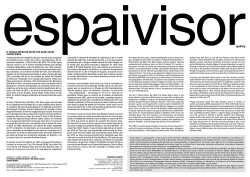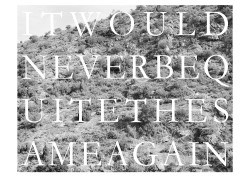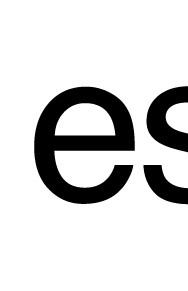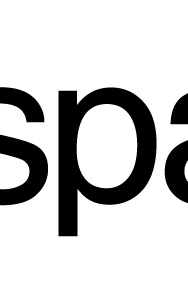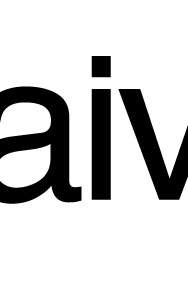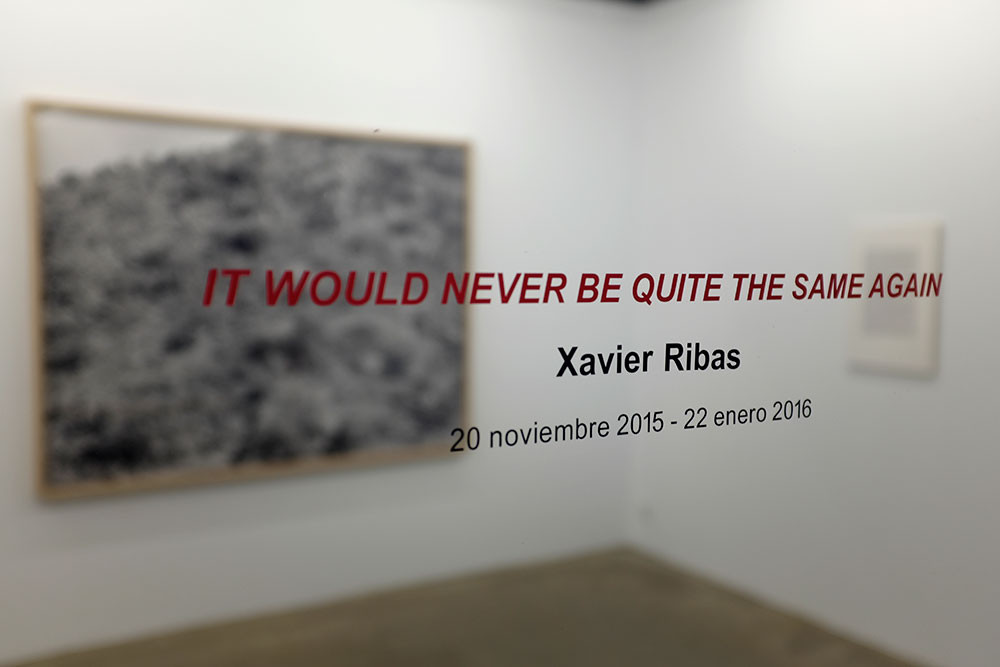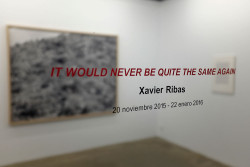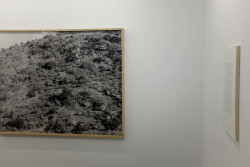space #1 - gallery
space #1 - gallery
En colaboración con ProjecteSD
Xavier Ribas
It Would Never Be Quite The Same Again
Compuesta por tres fotografías de gran formato y dos imágenes encontradas, junto a textos del artista y reproducciones de documentos originales, It Would Never Be Quite The Same Again (Nunca volverá a ser la misma) entreteje historias que remiten a lugares disputados y actos de disidencia. Las obras articulan una serie de acontecimientos y documentos presentados como ecos distantes, en la historia reciente de Chile, Gran Bretaña y España, de las detonaciones llevadas a cabo a finales del siglo XIX y principios del XX en los campos de salitre del Desierto de Atacama. Realizada como epílogo del proyecto Nitrato que Ribas presentó en el Museu d'Art Contemporani de Barcelona [MACBA] en 2014, esta serie evoca de nuevo una amplia red de geografías e historias entrelazadas, de recuerdos personales y colectivos en torno a los contextos políticos particulares de España y de Chile en 1973, y en torno a las relaciones históricas entre Chile y Gran Bretaña, donde Ribas reside desde el año 2000. En ambos trabajos el Desierto de Atacama hace de punto de fuga.
El título It Would Never Be Quite The Same Again está tomado de las palabras pronunciadas por un juez británico para apoyar su veredicto del caso de la decapitación en 2002 de una estatua de Margaret Thatcher, ferviente defensora del dictador chileno Augusto Pinochet. El mismo magistrado que inculpó al activista por la desfiguración de la estatua de la primera ministra británica reaparece de nuevo en Now You Have To Look At The Evidence Coldly And Dispassionately (Ahora debes encarar la evidencia fría y desapasionadamente) como juez instructor en el juicio de un grupo de activistas que, coincidiendo con el ataque de Israel a Gaza en 2009, destruyeron una fábrica de armas propiedad de ITT en Brighton. Curiosamente, en esa ocasión los activistas fueron absueltos al considerarse que actuaron «movidos por la necesidad» de evitar la destrucción ilícita de bienes palestinos por parte de Israel con armamento fabricado en Brighton, a la vez que el juez fue acusado de antisemitismo.
El sonado arresto domiciliario en 1991 de Augusto Pinochet en Londres es el tema de Thus The Dream Of My Youth And The Love Of My Life Passed Away And Left Me Desolate (Así, el sueño de mi juventud y el amor de mi vida pasaron, dejándome desolada). El destino de Pinochet se superpone al de un militar español del siglo XIX, el Conde de Morella, y al de unas piedras procedentes de la antigua ciudad romana de Leptis Magna, en la actual Libia, que fueron llevadas a Inglaterra en 1816 como regalo al Príncipe Regente. Con esas piedras se construyó en los jardines del palacio de Windsor un capricho arquitectónico denominado en su día el Templo de Augusto, el cual se encontraba verdaderamente deteriorado el año que Pinochet cumplió su arresto domiciliario a unos meros trescientos metros de distancia del monumento.
A Unique and Inevitable Voice (Una voz única e inevitable) rememora una entrevista a Salvador Allende a partir de unas fotocopias que se conservan en el Museo de Arte Contemporáneo Vicente Aguilera Cerni, en Vilafamés, Castellón. La entrevista —hoy desaparecida— fue filmada en 16 mm en 1972 por un periodista italiano para su emisión en la cadena de televisión norteamericana CBS, pero fue censurada y guardada hasta su exhibición por primera vez en la Bienal de Venecia de 1974, con Allende ya fallecido y Chile sumido en el violento régimen militar que siguió al golpe de estado de Pinochet, quien contó con el apoyo encubierto de la CIA y de grandes corporaciones norteamericanas con intereses en Chile como ITT.
Por último, Everyone Casts Their Own Shadow (Cada cual tiene su sombra) traza una serie de acontecimientos en torno al asesinato en Madrid del Almirante Carrero Blanco a manos de ETA en 1973, que alteró los planes de sucesión del anciano dictador General Francisco Franco a penas cinco meses después de que éste entregara el gobierno del país a su mano derecha. Un cuadro de Antoni Tàpies, L'esperit català, adquirido en el verano de 1973 en París por una acaudalada coleccionista de Pamplona cuyo hermano había sido secuestrado aquel mismo año por ETA, es como una premonición de la detonación que hizo volar por los aires al coche de Carrero Blanco. El hecho de que este cuadro forme parte de la colección del Museo Universidad de Navarra, al igual que el álbum fotográfico del siglo XIX de la mina de nitrato Alianza en el Desierto de Atacama, sirve a Ribas para cerrar el círculo y dar por concluido su trabajo sobre el nitrato de Chile.
XAVIER RIBAS, Barcelona, 1960
NUNCA VOLVERÁ A SER LA MISMA, 2015
Fotografía y texto, impresiones de chorro de tinta sobre papel
(Hahnemühle Matt Fibre 200 g)
Enmarcada: 58,5 x 41 cm
Texto: 58,5 x 41 cm
Ed. 1/3 + 1 AP
Texto que aparece en la obra
Era miércoles 3 de julio de 2002. Paul Kelleher, un productor de teatro de 37 años residente en Isleworth, al oeste de Londres, dejó a su hijo con una niñera y se dirigió al centro. Sabía que una estatua de Lady Margaret Thatcher, encargada inicialmente para ocupar la Cámara de los Comunes, se exhibía temporalmente en la Guildhall Art Gallery. Una vez dentro del local, según dijo, esperó su oportunidad y, a la que pudo, sacó un bate de cricket de debajo de la gabardina y pegó un golpe a la estatua. El bate, sin embargo, rebotó en la cabeza de mármol, así que cogió una barra de metal y le dio de nuevo. Esta vez “todo, desde el cuello hacia arriba, voló por el aire”. Tras decapitar con éxito la estatua, Paul Kelleher se sentó en un banco y esperó en silencio a ser arrestado. “Creo que está mejor así”, le dijo a la policía en cuanto llegó.
...
La fiscalía argumentó que era un “mal intencionado golpe publicitario” ejecutado por un hombre “que no era un ávido fan de la ex primera ministra”. También dijo que era un acto de protesta en contra del capitalismo global. Al defenderse a sí mismo frente el tribunal, Paul Kelleher rechazó el cargo de daños criminales, argumentando que él no era ningún criminal. Dijo estar cada vez más preocupado por la clase de mundo en el que crecería su hijo y que llevó a cabo el ataque “para protegerle, poniendo de manifiesto los peligros a los que se enfrenta”. Insistió que tenía una excusa muy legítima pues fue un acto contra las enfermedades que amenazan a nuestro sistema político. “La decapitación”, aseguró, “estuvo legalmente justificada”.
Al preguntarle sobre el incidente, el escultor Neil Simmons dijo que estaba “muy entristecido”. También afirmó que tardó dos años en encontrar la pieza de mármol que fuese del tamaño adecuado para una escultura de 1.8 toneladas y 8 pies de altura; y que le costó completarla casi ocho meses y varias sesiones con la señora Thatcher.
Durante el juicio celebrado en Southwark Crown Court, el 19 de febrero de 2003, el magistrado George Bathurst-Norman admitió que era difícil juzgar a personas con ideas profundamente arraigadas como Paul Kelleher. “No dudo de la sinceridad de sus creencias”, dijo el magistrado, “muchas personas las comparten, en particular aquellas relacionadas con lo que está sucediendo en los países del tercer mundo, y yo sería la última persona en negar a alguien el derecho a la libertad de expresión y a protestar contra algo si así lo cree. Pero cuando se protesta hay una vía correcta y adecuada y otra equivocada para hacerlo. Una multitud se unió el sábado pasado para manifestarse contra la guerra de Irak y fue el modo correcto de hacerse oír. Pero su decisión de arrancar la cabeza a la valiosa estatua de un político que dejó el poder hace diez años y cuyo partido ya no está en el Gobierno fue realmente inadecuada. Sean cuales sean sus creencias, los demás tienen el derecho a exigir que respeten su propiedad. Si esto no sucede, la corte debe velar por su protección. En estas circunstancias, a usted y a quienes como usted puedan estar tentados de seguir el curso de sus creencias, aún perjudicando a terceros, debo dejarles claro que se trata de un delito muy grave, so pena de prisión, dado que los daños son de un elevado coste”. Para cuando se dictó sentencia, la escultura de 150.000 libras ya había sido completamente restaurada y ubicada en un nuevo emplazamiento de la sede de la City of London Corporation al que se accede únicamente con cita previa. A Neil Simmons le costó seis meses y 10.000 libras repararla, pero aún puede verse una tenue línea donde la cabeza se rompió. “Se diría”, dijo el juez Bathurst-Norman aún sin haber visto la estatua reparada, que “ya nunca volverá a ser la misma.”
Al abandonar la sala y tras haber sido sentenciado a tres meses de prisión, Paul Kelleher que aquel día vestía jeans azul oscuro y una camiseta blanca con las palabras ‘Pequeño soldado japonés’, se giró hacia el juez y dijo: “Siento haberle causado este problema”, a lo que el juez contestó: “No, no me ha causado ninguno”.
XAVIER RIBAS, Barcelona, 1960
UNA VOZ ÚNICA E INEVITABLE, 2014
Fotografía y texto, impresiones de chorro de tinta sobre papel
(Epson Traditional 300g / Hahnemühle Matt Fibre 200 g)
150 x 190 cm; enmarcada: 154 x 194,5 x 3 cm
Texto: 58,5 x 41 cm
Ed. 1/3 + 1 AP
Texto que aparece en la obra
El Museo Popular de Arte Contemporáneo Vicente Aguilera Cerni de Vilafamés custodió durante la dictadura del general Augusto Pinochet una parte del Museo Internacional de la Resistencia Salvador Allende en el exilio. Conocido como el ‘Museo de la Solidaridad’, se constituyó en 1971 con obras donadas por artistas de todo el mundo en solidaridad con el proceso político de Chile liderado por el Presidente Salvador Allende y su gobierno de Unidad Popular. Esta fue la respuesta crítica de centenares de artistas contemporáneos a las presiones internacionales promovidas por el entonces presidente de los Estados Unidos Richard Nixon, orquestadas por su Consejero de Seguridad Nacional Henry Kissinger a través de la CIA y de corporaciones norteamericanas con intereses en Chile, como ITT y Anaconda, con la finalidad de interrumpir el proceso político democrático chileno. El boicot y el consiguiente aislamiento internacional de Chile dieron lugar al golpe militar 1973 y al suicidio de Allende. El Museo de la Solidaridad permaneció dieciocho años en el exilio durante los cuales el pueblo de Vilafamés, con la custodia de unas doscientas cincuenta obras donadas por artistas como Joan Miró, Eduardo Chillida, Lucio Muñoz, Antoni Muntadas, Juana Francés, Equip Crònica o Antoni Tàpies, se convirtió en un punto de referencia de la geografía internacional de la resistencia chilena.
El Museo de Vilafamés acoge hoy el Centro Internacional de Documentación Artística (CIDA), un fondo formado principalmente por la biblioteca y el archivo del historiador y crítico valenciano Vicente Aguilera Cerni (1920-2005). Entre sus fondos se encuentra la documentación referente a la custodia y difusión del Museo de la Solidaridad durante los años de exilio hasta su traslado a Chile al finalizar la dictadura en 1991. Se trata de un pequeño legado constituido básicamente por catálogos de exposiciones, listados de obras, registros de las itinerancias y correspondencia de índole diversa. Dentro de estos ‘materiales chilenos’ se guardan tres documentos fotocopiados que hacen referencia a la proyección en la Bienal de Venecia de 1974 de una entrevista a Salvador Allende realizada en 1972 en el palacio presidencial de La Moneda en Santiago por el periodista italiano Empedocle Maffia (1943-2008).
La entrevista, que lleva por título ‘Salvador Allende al pueblo norteamericano’, se registró en 16 mm para ser emitida previo acuerdo por el canal televisivo norteamericano CBS con la finalidad de hacer llegar la voz de Allende al pueblo de los Estados Unidos. Sin embargo la entrevista fue finalmente rechazada por la CBS y no se llegó a emitir. Fue en la Bienal de Venecia de 1974, Chile ya sumido en la violenta dictadura militar de Pinochet, cuando se mostró públicamente por primera vez. El entonces director de la bienal, Carlo Ripa di Meana, escribió en la nota de prensa: “Creo que la entrevista del Presidente Allende constituye un documento que se puede definir como histórico. Incluso en estos días de influyentes revelaciones y confesiones por parte de altas fuentes estadounidenses sobre las interferencias operadas por las empresas multinacionales en el proceso interno chileno durante el gobierno de Unidad Popular, el testimonio de Allende sobre estas mismas interferencias es una voz única e inevitable para quien quiera entender el ‘caso Chile’. La Bienal, un ente cultural con proyección internacional, no podía eludir tal documento: se convierte en su vehículo de difusión por primera vez en el mundo, con la certeza de cumplir un deber claro de la cultura y de la información”.
Después de la Bienal de Venecia se pierde el rastro de la cinta. Los tres documentos fotocopiados que se guardan en el CIDA de Vilafamés, además de las entradas del registro de comunicación de la Bienal de Venecia, son los únicos rastros localizados hasta el momento de esa entrevista. Esto muestra la importancia de un pequeño museo de províncias al preservar la memoria de una disidencia política y de un gesto de solidaridad con ella. Frente a esa voz ausente, su rastro contenido en unas cuantas fotocopias, el paisaje de Vilafamés que se observa desde una de las ventanas del Centro Internacional de Documentación Artística ejerce de contraplano, o índice fotográfico de esa ausencia.
XAVIER RIBAS, Barcelona, 1960
AHORA DEBES ENCARAR LA EVIDENCIA FRÍA
Y DESAPASIONADAMENTE, 2015
Fotografía y texto, impresiones de chorro de tinta sobre papel
(Epson Traditional 300g / Hahnemühle Matt Fibre 200 g)
150 x 190 cm; enmarcada: 154 x 194,5 x 3 cm
Texto: 58,5 x 41 cm
Ed. 1/3 + 1 AP
Texto que aparece en la obra
En la madrugada del 17 de enero del 2009, cinco activistas irrumpieron en una fábrica de armas en Brighton y destruyeron todo el material que encontraron, lanzándolo por la ventana junto con documentos y archivos. En unas declaraciones hechas en vídeo y grabadas con anterioridad culpaban a EDO MBM de violar el derecho internacional suministrando componentes armamentísticos a Israel. Al “desmantelar” la fábrica se proponían “obstaculizar o retrasar la comisión de crímenes de guerra” por parte de Israel. En virtud de lo que establece la ley británica, invocaron “la legítima defensa”, según la cual puede ser lícito cometer un delito para evitar un delito más grave. Tras el boicot, los cinco esperaron dentro de la fábrica a ser arrestados por la policía.
...
El asalto se produjo mientras Israel estaba llevando a cabo una acción militar contra Gaza. La ofensiva israelí conocida como Operación Plomo Fundido comenzó el 27 de diciembre de 2008 con un bombardeo intensivo sobre la franja de Gaza realizado por aviones F-16 y helicópteros Apache, previo a una invasión militar terrestre sin precedentes. La comunidad internacional condenó la magnitud del ataque ante las horribles imágenes que empezaron a llegar a los medios de comunicación. La Operación Plomo Fundido terminó el 18 de enero de 2009 dejando sin vida a más de 1.400 palestinos - más de la mitad eran bajas civiles - y 13 soldados israelíes, cuatro de los cuales fueron asesinados por fuego amigo.
Los antibelicistas de Brighton llevaban haciendo campaña contra EDO MBM desde 2004. Acusaron a la compañía de producir armas y componentes de uso militar para aviones F-16, como el portador de bombas VER-2 y ZRFAU - un mecanismo que arma al mísil una vez es lanzado. El gobierno británico había prohibido la concesión de licencias de exportación de cualquier material que Israel pudiera desplegar de manera agresiva en los Territorios Ocupados. Desde 2004, los activistas de “Smash Edo” habían escrito a los políticos para destacar el hecho de que los componentes fabricados en Brighton eran utilizados en los aviones de guerra israelíes para atacar territorios palestinos. Los activistas se habían estado manifestando regularmente ante las puertas de la fábrica. Celebraron encuentros de “karaoke y mala música a todo volumen”, leyeron en voz alta los nombres de los civiles muertos en Gaza, se encadenaron a las puertas de la fábrica y okuparon el tejado, siempre decididos a sabotear el funcionamiento normal de la empresa. Para empeorar las cosas, en 2007 EDO MBM fue adquirida por la corporación estadounidense ITT, conocida por su acción encubierta, junto con la CIA, en el derrocamiento del gobierno de Salvador Allende en Chile, y por su apoyo al golpe militar de Augusto Pinochet.
El Estado presentó cargos por “conspirar para cometer daños criminales” contra los cinco activistas que irrumpieron en la fábrica y otros dos que se quedaron fuera. Debido a los destrozos, valorados entorno a 187.000 libras, la fábrica estuvo parada una semana entera. Los activistas se enfrentaron a una pena máxima de diez años de prisión. El juicio tuvo lugar en junio de 2010 en el tribunal de Hove, presidido por el juez George Bathurst-Norman.
Durante el juicio, los acusados alegaron que actuaron ‘por necesidad’ para evitar la destrucción ilegal de propiedades palestinas por parte de Israel. También argumentaron que tenían la ‘certeza razonable’ de que ciertos componentes armamentísticos utilizados en el bombardeo de Gaza los estaba produciendo EDO MBM en Brighton, que su acción tenía como objetivo frenar la cadena de suministro que hacía posible la matanza de civiles en Gaza, y que el daño causado a la propiedad de EDO MBM fue ‘razonable y proporcionado’ en relación al daño que Israel estaba causando en Gaza. Los activistas de “Smash Edo” Ceri Gibbons y Chris Osmond entregaron un dossier con pruebas que habían ido compilando durante más de cinco años a fín de demostrar la complicidad de la compañía en los crímenes de guerra. La empresa tuvo que responder a las acusaciones relativas a la fabricación de componentes de armas que con el tiempo serían vendidas a Israel, y a la petición de revelar sus contratos y licencias de exportación, a lo que en parte se negó. El director de EDO MBM Paul Hills acabó admitiendo haber eliminado de la web evidencias que sugerían sus relaciones con Israel. Reconoció también, que cualquiera que examinara las pruebas que le fueron presentadas en el juzgado se formaría la razonable opinión de que su empresa estaba envuelta en ventas de armamento a Israel.
Tras la audiencia, al magistrado Bathurst- Norman le tomó casi dos días leer su resumen al jurado. El juez hizo una recapitulación de las pruebas aportadas por EDO MBM contra de los acusados y por los acusados contra EDO MBM e Israel, “revelando”, como dijo, “lo que la ley es” en relación al evento en Brighton “con el telón de fondo de Israel y Palestina”, y de este modo posicionar un evento local en un contexto político más amplio. El resultado llevó a conectar ineludiblemente las geografías de Brighton y Gaza en la mente de todos los presentes.
...
El 30 de junio de 2010, el jurado absolvió a los acusados de conspirar para causar daños materiales a EDO MBM. La decisión desencadenó una furiosa protesta. Miembros de la extrema derecha judeo-británica hicieron un frenético lobby contra el juez Bathurst-Norman, acusándolo de antisemitismo. Noam Chomsky, por su parte, expresó su “respeto y admiración por aquellos que están ejerciendo la resistencia no-violenta contra la participación británica en los crueles crímenes de Israel en Gaza”.
XAVIER RIBAS, Barcelona, 1960
ASÍ, EL SUEÑO DE MI JUVENTUD Y EL AMOR DE MI VIDA PASARON,
DEJÁNDOME DESOLADA, 2015
Fotografía y texto, impresiones de chorro de tinta sobre papel
(Epson Traditional 300g / Hahnemühle Matt Fibre 200 g)
150 x 190 cm; enmarcada: 154 x 194,5 x 3 cm
Texto: 58,5 x 41 cm
Ed. 2/3 + 1 AP
Texto que aparece en la obra
El arcén de la carretera A30, frente al complejo residencial Wentworth, fue ocupado periódicamente por el Comité Contra la Impunidad de Chile, conocido como ‘El piquete de Londres’, durante los catorce meses en los que Augusto Pinochet estuvo en arresto domiciliario, viviendo en una casa de alquiler llamada ‘Everglades’. El ex dictador chileno había sido detenido por la policía metropolitana el 16 de octubre de 1998, mientras se recuperaba de una intervención médica en The Clinic, centro privado situado al norte de Londres. El juez español Baltasar Garzón emitió la orden de arresto de Pinochet y la extradición por cargos de tortura, represión estatal, desaparición y homicidio, perpetrados en Chile entre el 11 de septiembre de 1973 y el 31 de diciembre de 1983. El principio de Justicia Universal permite a los tribunales nacionales tratar casos de delitos graves contra la humanidad, aunque esos delitos no se hayan cometido en su territorio nacional e incluso si son cometidos por los gobernantes de otros estados. Este principio se basa en la consideración de que las víctimas de la represión estatal son organismos extraterritoriales, universales.
...
Wentworth es una urbanización situada en Virginia Water, pequeña población del sur de Londres. En ella vive una selecta minoría de gente pudiente entre la que figuran estrellas de rock y mediáticas, futbolistas, banqueros, sultanes y monarcas extranjeros, aristócratas locales así como miembros de la tríada hongkonesa y la mafia rusa. Se extiende sobre los terrenos de la antigua finca de Ramón Cabrera Griñó, conde de Morella, un reconocido general español del siglo XIX que luchó en las guerras carlistas y ganó notoriedad por la crueldad con la que arrasó pueblos y disparó a cientos de prisioneros y civiles en las montañas de Cataluña. Cabrera Griñó se trasladó a Inglaterra en 1850 y vivió en la casa Wentworth hasta su muerte, en 1877. Su hija vendió la finca en 1920 que, poco después, se convirtió en un campo de golf con varias propiedades residenciales desperdigadas. Un nieto de Cabrera Griñó regresó a España en 1936 para luchar junto al general Franco en la Guerra Civil Española y murió cerca de Ceuta, cuando su automóvil fue alcanzado por una bomba. Durante la 2 a Guerra Mundial, la sede del Army Group en la retaguardia se refugió en la casa Wentworth, que se había convertido - y sigue siendo - el club de golf, para sentar los planes de invasión de Europa. Wentworth fue el santuario de Pinochet durante catorce meses. Estuvo protegido por su entorno y la visita ocasional de Margaret Thatcher, además de la custodia de la policía británica y de El piquete de Londres, que al golpear sus ollas y sartenes no muy lejos del jardín, ponía un coto sonoro a su universo.
Virginia Water debe su nombre al lago creado a finales del siglo XVIII en el interior del Windsor Grand Park, un gran parque propiedad de la Corona. En la orilla sur del lago, cerca del área de descanso donde El Piquete de Londres montó guardia para protestar contra Pinochet, se encuentran las ruinas de un templo romano construido con piedras y columnas provenientes de la antigua ciudad Leptis Magna, en lo que hoy es Libia. Estas piedras fueron llevadas a Inglaterra en 1816 como regalo al Príncipe Regente. El arquitecto real Jeffrey Wyattville fue quien dirigió la comisión destinada a crear una ruina falsa con las piedras de unas ruinas verdaderas. Con el tiempo, sin embargo, el ‘Templo de los Dioses’ o ‘Templo de Augusto’, como se conocía en los primeros años, cayó en su propia ruina, dañado por los fenómenos atmosféricos y los visitantes, y en 2008 se llevó a cabo un proyecto para reparar y restaurar el “monumento” según el diseño de 1827. Se intervino “donde era evidente que el daño no era parte de las ruinas originales” y todas las columnas que se sabía que habían caído “fueron re-erigidas y aseguradas” utilizando métodos de fijación modernos.
...
Cuando a Pinochet se le permitió regresar a Chile el 2 de marzo del 2000, perdió la inmunidad política y vivió bajo arresto domiciliario hasta su muerte en 2006. Su arresto en Londres se convirtió en un hito en el derecho internacional, estableciendo el precedente de que los crímenes de lesa humanidad son crímenes universales no sujetos a prescripción ni inmunidad alguna. En consecuencia, otros líderes que han cometido crímenes bien documentados y son requeridos en numerosas jurisdicciones, ya sea para ir a juicio o como testigos de la acusación, han restringido sus salidas internacionales por temor a verse afectados por el principio de Justicia Universal. En los últimos años, sin embargo, varios gobiernos, incluidos el de España, han limitado significativamente el uso de dicho principio en sus respectivos tribunales, presionados por países como Estados Unidos, Israel y China.
XAVIER RIBAS, Barcelona, 1960
CADA CUAL TIENE SU SOMBRA, 2015
Fotografía y texto, impresiones de chorro de tinta sobre papel
(Hahnemühle Matt Fibre 200 g)
Enmarcada: 58,5 x 41 cm
Texto: 58,5 x 41 cm
Ed. 1/3 + 1 AP
Texto que aparece en la obra
El coche oficial en el que viajaba el presidente del gobierno español almirante Luis Carrero Blanco voló por los aires la mañana del 20 de diciembre de 1973 como consecuencia de la detonación de una carga de explosivos colocada por miembros de un comando de ETA en un túnel excavado debajo de la calle Claudio Coello de Madrid. Los momentos que siguieron a la detonación fueron de gran confusión, ya que el Dodge Dart de color negro en el que viajaba a diario el presidente para acudir a misa y a su trabajo no se localizó hasta más tarde, cuando unos jesuitas dieron el aviso de que el coche se encontraba en una terraza del patio interior del edificio de cinco plantas de la parroquia de San Francisco de Borja. Nadie advirtió tampoco –quizás quedara cubierta por los escombros– la línea roja vertical pintada en la pared del edificio opuesto a los jesuitas para indicar la alineación del vehículo con la carga explosiva que fue detonada a distancia. El asesinato de Carrero Blanco dio al traste con los planes de sucesión del anciano general Francisco Franco, que apenas cinco meses antes había cedido el gobierno del país a su hombre de confianza, el que durante más de treinta años a su lado se ganara la reputación, incluso entre su gente, de ser más franquista que Franco, su mano derecha que apenas veinticuatro horas antes del magnicidio recriminó a Henry Kissinger que su país no hiciera más para cortar de plano el surgimiento del marxismo en Latinoamérica.
...
El cráter y la voladura de Carrero Blanco, la inesperada proximidad y contundencia de la acción que derramó las lágrimas del dictador y cambió el rumbo de la transición política prevista por el régimen, se habría financiado en parte con el dinero conseguido por ETA con el rescate del empresario navarro Felipe Huarte, secuestrado de su casa situada en la finca de la Villa Adriana, el domicilio de los Huarte en Pamplona, el 16 de enero de 1973 con su propio coche, un Dodge Dart de color verde, y liberado diez días más tarde en las inmediaciones de Irún después de que su familia hiciera efectivas las condiciones del rescate: el pago en París de cincuenta millones de pesetas en divisas y la aceptación del convenio colectivo y readmisión de los 140 trabajadores despedidos de una empresa del Grupo Huarte, Torfinasa, en huelga desde hacía cuarenta y ocho días. Felipe Huarte era hijo de Félix Huarte, creador en la década de 1950 del gran grupo empresarial navarro a partir de la constructora Huarte y Cía. Su lealtad al régimen explica, por ejemplo, que llevara a cabo las obras del monumento franquista del Valle de los Caídos, en cuya construcción trabajaron presos republicanos en condiciones de semiesclavitud, o que el gobierno de la Unión del Pueblo Navarro junto al Partido Popular le entregara recientemente, el 3 de diciembre de 2014, a título póstumo, la Medalla de Oro de Navarra por su contribución al proceso de industrialización de esta comunidad foral.
...
Unas semanas después de la condecoración a Félix Huarte, el 22 de enero de 2015, se inauguró en Pamplona el Museo Universidad de Navarra, diseñado por Rafael Moneo especialmente para albergar, conservar y difundir el fondo fotográfico de la Universidad de Navarra y, sobre todo, un legado de 46 obras de arte contemporáneo de artistas como Pablo Picasso, Vasili Kandinsky, Mark Rothko, Eduardo Chillida, Jorge Oteiza o Antoni Tàpies, donadas el año 2008 a la universidad por María Josefa Huarte, hija de Félix Huarte, que junto a su hermano Juan fomentaron el mecenazgo artístico. Un ejemplo de ello es el festival de arte de vanguardia Encuentros 72 de Pamplona por el que se acusó a la familia Huarte de auspiciar el festival con el dinero que negaba a los trabajadores de sus empresas, y de paso legitimar al régimen. Una de las obras más importantes de este legado es el cuadro L’esperit català (1971) de Antoni Tàpies que la coleccionista adquirió en París el verano de 1973. Este cuadro de 200 x 275 cm es un manifiesto político del pintor catalán realizado en las postrimerías del franquismo, cuando muchos colectivos luchaban para acabar con la dictadura que seguía afirmándose con penas de muerte, consejos de guerra y toques de queda. El cuadro muestra cuatro gruesas líneas rojas verticales sobre un fondo amarillo diseminado de trazos rojos pintados con los dedos de ambas manos y enunciados de contenido político [Dret al tiranicidi, Sobirania popular...] inscritos desordenadamente y solapados con las palabras Llibertat, Democràcia, Diàleg, Cultura, Informació, Veritat...
This exhibition is in Collaboration with ProjecteSD
Xavier Ribas
It Would Never Be Quite The Same Again
Developed as three large, detailed photographs and two found images, alongside artist’s texts and copies of original documentation, It Would Never Be Quite The Same Again weaves together histories associated with contested sites and acts of dissent. The works interrogate a number of events and documents construed as distant echoes, in the recent history of Chile, Great Britain and Spain, of the detonations in the late 19th and early 20th century nitrate fields of the Atacama Desert. The series is an appendix to Ribas' long term project Nitrate, presented in 2014 at the Museu d'Art Contemporani de Barcelona [MACBA], and conjures up a wide network of interconnected geographies and histories, of personal and collective memories on the distinctive political contexts of Spain and Chile around 1973, and on historical relationships between Chile and Great Britain – Ribas country of residence since 2000 – which are at the heart of the Nitrate project. For both bodies of work, the Atacama desert operates as a vanishing point.
The title It Would Never Be Quite The Same Again refers to the words uttered in court by a British judge to support his verdict on the defacement in 2002 of a statue of a renowned supporter of Chilean dictator Augusto Pinochet, Margaret Thatcher. The same judge that brought a guilty verdict against the London activist's defacement of the statue of the former British Prime Minister reappears in another piece, Now You Have To Look At The Evidence Coldly And Dispassionately, hearing the case of a group of activists who in 2009 smashed up an ITT owned weapons factory in Brighton while Israel was attacking Gaza. This time, however, and interestingly, the activists were acquitted on the grounds of acting 'out of necessity' to prevent Israel unlawfully destroying Palestinian property with weapons produced in Brighton, and the judge was accused of anti-Semitism.
The 1991 ground-breaking detention and house arrest of Augusto Pinochet in London on charges of torture, state repression, disappearance and homicide, is the subject of another work, Thus The Dream Of My Youth And The Love Of My Life Passed Away And Left Me Desolate, where Pinochet's fate overlaps with that of a 19th century Spanish warlord, the Count of Morella, and that of stones from the ancient Roman city of Leptis Magna, in present day Libya, brought to England in 1816 as a gift to the Prince Regent, later stitched together as a folly in the grounds of Windsor Palace with the given name of Temple of Augustus, to then fall into a state of disrepair by the time Pinochet lived under house arrest less than three hundred yards away.
A Unique and Inevitable Voice recalls a lost film interview with Salvador Allende from a handful of photocopies kept in the Museum of Contemporary Art Vicente Aguilera Cerni in Vilafamés, Castelló. The interview was recorded on 16 mm film in 1972 by an Italian journalist to be broadcasted on US television channel CBS, but it was censored and put away eventually to be shown for the first time at the Venice Biennale in 1974, Allende already dead and Chile plunged deep in Pinochet's violent regime following the military coup supported through covert action by the CIA and US corporations with interests in Chile like ITT.
Finally, Everyone Casts their Own Shadow traces a number of events surrounding ETA's assassination in 1973 of Admiral Carrero Blanco in Madrid, which disrupted the succession plans of the elderly Spanish dictator General Francisco Franco, little over 5 months after he had handed over the government of the country to his right-hand man. A painting by Antoni Tàpies, L'esperit català, purchased in Paris in the summer of 1973 by a wealthy collector from Pamplona, whose brother had earlier the same year been kidnapped by ETA, acts as a premonition of the detonation that sent Carrero Blanco's car flying through the air. The fact that the painting is now in the collection of the Museo Universidad de Navarra, as is the 19th century album of photographs of the Alianza nitrate mine in the Atacama Desert, allows Ribas to close the circle and put and end to his work on Chilean nitrate.
XAVIER RIBAS, Barcelona, 1960
IT WOULD NEVER BE QUITE THE SAME AGAIN, 2015
Photograph and text, inkjet print on paper
(Hahnemühle Matt Fibre 200 g)
Framed: 58,5 x 41 cm
Text: 58,5 x 41 cm
Ed. 1/3 + 1 AP
Text on the work
It was Wednesday 3rd of July 2002. Paul Kelleher, a 37 year-old theatre producer from Isleworth in west London, arranged a babysitter for his son and headed for the City of London. He had learned that a statue of Lady Margaret Thatcher, commissioned initially for the Houses of Parliament, was temporarily on display at the Guildhall Art Gallery. Inside the gallery – he said – he waited for a window of opportunity, then took out a cricket bat from under his raincoat, and swung a blow at the statue. The bat, however, bounced off the statue’s head, so he grabbed a metal stanchion to strike again, this time “sending everything from the neck upwards sailing through the air”. Having successfully beheaded the statue Paul Kelleher sat on a bench and waited quietly to be arrested. “I think it looks better like that”, he told the police when they arrived.
...
The prosecution said it was an “ill-conceived publicity stunt” carried out by a man “who was not an avid fan of the former prime minister”. The prosecution also said he was making a protest against global capitalism. Defending himself in court Paul Kelleher rejected the accusation of one count of criminal damage arguing that he was not a criminal. He said he was becoming increasingly worried as to what sort of world he had brought his son into, and that he carried out the attack “to help protect his son by drawing attention to the dangers facing the world”. He also said he had a lawful excuse as his was an act against the ills of the world’s political system. “The decapitation” he claimed, “was truly justified in law.”
Asked about the incident, sculptor Neil Simmons said he was “deeply saddened”. He also said it had taken him two years to find the right-sized piece of marble for the 1.8 ton, 8 foot tall sculpture, and almost eight months and several sittings with Lady Thatcher to complete.
During the trial at Southwark Crown Court, London, on the 19th of February 2003, Judge George Bathurst-Norman admitted that people with deeply held beliefs such as Paul Kelleher presented the court with a very difficult sentencing problem. “I don’t doubt the sincerity of your beliefs” he said, “many people share them, particularly in relation to what is happening in third world countries, and I would be the last person to deny any person the right to freedom of speech and the right to protest against matters which support his beliefs. But when it comes to protest there is a right and a proper way to protest and also a wrong way to do so. The way people banded together last Saturday to demonstrate against the war in Iraq was the right and proper way to make their voices heard. But the way you acted to knock the head off a valuable statue of a politician who left power over ten years ago, and whose party is no longer the party of government, was very much the wrong way. Whatever your beliefs people have the right to require you to respect their property. If you do not do so they are entitled to look to the court for protection. In these circumstances I have to make it clear to you and others like you who may be tempted in pursuing the course of their beliefs, but cause damage to other people’s property, that offences of this kind are so serious that inevitably a prison sentence must follow when the damage was as costly as in this case.” By the time of the hearing the £150,000 statue had been fully restored and tucked away in another part of the City of London Corporation headquarters, where it could be viewed only by appointment. It had taken Neil Simmons six months and £10,000 to repair, but a faint line was still visible where its head had been severed. “It would seem” said Judge Bathurst-Norman having not yet seen the repaired statue, “it would never be quite the same again.”
At the end of the trial, having received a three months’ prison sentence, and as he was being led out of the court room – he was wearing dark blue jeans and a white T-shirt with the words ‘Small Japanese Soldier’ – Paul Kelleher turned to the judge and said to him “Sorry to cause you all this trouble”, to which the judge replied “No, you haven’t caused me any”.
XAVIER RIBAS, Barcelona, 1960
A UNIQUE AND INEVITABLE VOICE, 2014
Photograph and text, inkjet print on paper
(Epson Traditional 300g / Hahnemühle Matt Fibre 200 g)
150 x 190 cm; framed: 154 x 194,5 x 3 cm
Text: 58,5 x 41 cm
Ed. 1/3 + 1 AP
Text on the work
During the dictatorship of Augusto Pinochet, the Museo Popular de Arte Contemporáneo Vicente Aguilera Cerni, in Vilafamés, Spain, was the home ‘in exile’ of a section of the Museo Internacional de la Resistencia Salvador Allende. Known as the ‘Museum of Solidarity’, it was formed in 1971 with works donated by artists from across the globe in solidarity with Chile’s political process under its new elected President Salvador Allende and his Unidad Popular government. This was a critical response from hundreds of contemporary artists to the political pressures exerted on Allende’s government by the then President of the United States of America Richard Nixon, orchestrated by his National Security Advisor Henry Kissinger through the CIA and North American corporations with interests in Chile, like ITT and Anaconda, with the aim of disrupting the Chilean democratic process. The U.S. boycott and the following isolation of Chile on an international scale led to the 1973 military coup and Allende’s consequent suicide. The Museum of Solidarity remained ‘in exile’ for eighteen years during which time the town of Vilafamés, being the custodian of about two-hundred and fifty works donated by artists such as Joan Miró, Eduardo Chillida, Lucio Muñoz, Antoni Muntadas, Juana Francés, Equip Crònica and Antoni Tàpies, became an important place within the international geography of Chilean resistance.
The Vilafamés museum currently houses the Centro Internacional de Documentación Artística (CIDA), a collection consisting mainly of the library and archives of the Valencian historian and critic Vicente Aguilera Cerni (1920–2005). Among its contents can be found documents referring to the custody of the Museum of Solidarity up until its final transfer to Chile in 1991 with the end of Pinochet’s dictatorship. It is a small legacy, consisting basically of touring exhibition catalogues, lists of works, and correspondence of various kinds. Within these ‘Chilean materials’ are preserved three photocopied documents that refer to the projection at the 1974 Venice Biennale of an interview with Salvador Allende, filmed in 1972 at the presidential palace of La Moneda in Santiago, by the Italian journalist Empedocle Maffia (1943–2008).
The interview ‘Salvador Allende Speaks to the North American People’ was filmed on 16mm to be broadcast by the U.S. television channel CBS in order to let Allende’s voice be heard in the United States. However CBS finally rejected the film, and it was not until the 1974 Venice Biennale, with Chile already plunged deep in Pinochet’s violent military regime, that it was publicly shown for the first time. Carlo Ripa di Meana, the then director of the Biennale, wrote the following press release: “I believe that President Allende’s interview constitutes a document that can be defined as historic. Especially during this time of influential revelations and confessions by high- level sources within the United States concerning the interference of multinational corporations in Chile’s internal process during the Unidad Popular government, Allende’s testimony on these same interferences is a unique and inevitable voice for anyone wishing to understand the ‘case of Chile’. The Biennale, a cultural entity with an international audience, could not ignore such a document: it becomes the vehicle for its dissemination for the first time ever, in the certainty that it is fulfilling a clear duty towards culture and information.”
The film’s whereabouts are lost after the Venice Biennale. The three photocopied documents kept in CIDA’s archive in Vilafamés, along with the entries in the records of the Venice Biennale, are the only traces found as of yet. This shows the importance of a small provincial museum in saving the memory of a political dissidence and of a gesture made in solidarity with it. In the face of Allende’s absent voice, its trace contained in a handful of photocopies, the landscape of Vilafamés that can be observed from one of CIDA’s windows manifests as a counter-image, or a photographic index of its absence.
XAVIER RIBAS, Barcelona, 1960
NOW YOU HAVE TO LOOK AT THE EVIDENCE COLDLY
AND DISPASSIONATELY, 2015
Photograph and text, inkjet print on paper
(Epson Traditional 300g / Hahnemühle Matt Fibre 200 g)
150 x 190 cm; framed: 154 x 194,5 x 3 cm
Text: 58,5 x 41 cm
Ed. 1/3 + 1 AP
Text on the work
In the early hours of the 17th of January 2009 five activists broke into a weapons factory in Brighton, destroying as much equipment as they could find, throwing it out of the windows along with documents and files. In a series of video statements recorded beforehand, they blamed EDO MBM of breaking international law by supplying weapons components to Israel. They intended the “decommissioning” of the factory “to hamper or delay the committing of war crimes” by Israel, and claimed that under the ‘lawful excuse’ defence in British law an offence can be lawful if done to prevent a more serious crime. After the assault, the five waited inside the factory to be arrested by the police.
...
At the time of the break-in Israel was engaged in military action against Gaza. Known as Operation Cast Lead, the Israeli offensive began on the 27th of December 2008 with a series of intensive aerial bombings of the Gaza strip by F16 and Apache aircraft, in preparation for an unprecedented military land invasion. The international community condemned the magnitude of the attack as horrific images of the destruction began reaching the media. Operation Cast Lead ended on the 18th of January 2009, having taken the lives of over 1,400 Palestinians – more than half of them civilians – and 13 Israeli soldiers, four of whom were killed by friendly fire.
Anti-war activists in Brighton had been campaigning against EDO MBM since 2004. They accused the company of producing weapons and weapons components for use in F16 military aircraft, such as the VER-2 bomb carrier, and the Zero Retention Force Arming Unit (ZRFAU) – a mechanism that arms the missile as it is being released. Under UK international policy, the government had prohibited licensing of any export to Israel that could be deployed aggressively in the Occupied Territories. Since 2004, ‘Smash Edo’ activists had been writing to politicians calling attention to the fact that the components made in Brighton were used in Israeli warplanes to attack Palestinian territories. The activists had been regularly demonstrating outside the factory gates – holding “loud-noise-bad-music-karaoke” demonstrations; reading out the names of civilians killed in Gaza; chaining themselves to the factory gates and occupying the roof, in determined attempts to sabotage the normal functioning of the company. To make matters worse, in 2007 EDO MBM was acquired by the US corporation ITT, well known for their covert action, together with the CIA, in undermining the government of Salvador Allende in Chile, and their support for the military coup of Augusto Pinochet.
The State brought charges of ‘conspiracy to commit criminal damage’ against the five activists that broke into the factory, and two others that remained outside. The damage to technological equipment, estimated at around £187,000, had brought the factory to a halt for an entire week. The activists faced a maximum prison sentence of ten years. The trial took place in June 2010 at Hove Crown Court with Judge George Bathurst- Norman presiding.
During the trial the defendants argued that they acted ‘out of necessity’ to prevent Israel unlawfully destroying Palestinian property. They also argued that they had ‘reasonable belief ’ that weapons components used in the bombing of Gaza were being produced by EDO MBM in Brighton, that their action was aimed at slowing down the chain of supply making possible the killing of civilians in Gaza, and that the damage caused to EDO MBM property was ‘reasonable and proportionate’ in relation to the damage Israel was causing in Gaza. A dossier of evidence compiled over five years by Smash Edo activists Ceri Gibbons and Chris Osmond was presented, which pointed to the company’s complicity in war crimes. The company had to respond to the accusations of manufacturing weapons components that would eventually be sold to Israel, and was requested to disclose contracts and export licences, to which they refused in part. EDO MBM director Paul Hills had to admit to removing website evidence that suggested dealings with Israel, and further, that anyone looking at the evidence presented in court would form the reasonable belief that his company was involved in arms sales to Israel.
At the end of the hearing, it took the best part of two days for Judge Bathurst-Norman to read his summing up to the jury. The Judge recapped the evidence provided by EDO MBM against the defendants, and by the defendants against EDO MBM and Israel, “unfolding” as he put it “what the law is” in relation to the event in Brighton, but also in relation to “the background of Israel and Palestine”, thus positioning the local event in the broader political context. The summing up ineluctably connected the geographies of Brighton and Gaza in the minds of everyone present.
...
On the 30th of June 2010, the jury found the defendants not guilty of conspiring to cause criminal damage to EDO MBM. The decision was followed by a furious outcry and frenzied lobbying by members of the right-wing British Jewish ‘intelligentsia’ against Judge Bathurst-Norman, accusing him of anti-Semitism. Noam Chomsky, on the other hand, expressed his “respect and admiration for those who are undertaking non- violent resistance to oppose British participation in Israel’s cruel crimes in Gaza”.
XAVIER RIBAS, Barcelona, 1960
THUS THE DREAM OF MY YOUTH AND THE LOVE OF MY LIFE PASSED
AWAY AND LEFT ME DESOLATE, 2015
Photograph and text, inkjet print on paper
(Epson Traditional 300g / Hahnemühle Matt Fibre 200 g)
150 x 190 cm; framed: 154 x 194,5 x 3 cm
Text: 58,5 x 41 cm
Ed. 2/3 + 1 AP
Text on the work
A lay-by on the A30, opposite one of the entrances to the Wentworth Estate, was occupied regularly by the Chile Committee Against Impunity, known as ‘El piquete de Londres’, during the fourteen months that Augusto Pinochet lived there under house arrest in a rented house named ‘Everglades’. The former Chilean dictator had been arrested by the Metropolitan Police on the 16th of October 1998, while he was recovering from medical treatment in The Clinic, a private hospital in north London. Spanish Judge Baltasar Garzón issued the warrant for Pinochet’s arrest and extradition on charges of torture, state repression, disappearance and homicide, perpetrated in Chile between the 11th of September 1973 and the 31st of December 1983. The doctrine of Universal Jurisdiction allows national courts to try cases of serious crimes against humanity even if these crimes are not committed on their national territory, and even if they are committed by government leaders of other states. Universal Jurisdiction is founded on the consideration that the victims of state repression are extraterritorial, universal bodies.
...
Wentworth is a private residential estate in the small town of Virginia Water, south of London. It is the home of a select minority of wealthy people, including rock and media stars, footballers, bankers, foreign sultans and kings, and local near-royals, as well as Hong Kong triads and the Russian mafia. It extends over the grounds of the former country estate of Ramón Cabrera Griñó, count of Morella, a renowned 19th-century Spanish warlord who fought in the Carlist Wars and gained notoriety for his ferocity and cruelty, savagely raiding towns and shooting hundreds of prisoners and civilians in the mountains of Catalonia. Cabrera Griñó moved to England in 1850 and lived in Wentworth House until his death in 1877. The estate was sold by his daughter in 1920, and soon after it was developed into a golf course with dispersed residential properties. A grandson of Cabrera Griñó returned to Spain in 1936 to fight alongside General Franco in the Spanish Civil War, and died near Ceuta when his car was blown up by a bomb. During WW2 the Rear HQ of the Army Group took shelter in Wentworth House, which had become – and still is – the Wentworth Club, to lay the plans for the invasion of Europe.The Wentworth Estate was Pinochet’s sanctuary for fourteen months, protected by his entourage and the occasional visit of Margaret Thatcher, held custody by the British police, and by The London Picket banging pots and pans not far away from his garden, establishing the sonic boundaries to his universe.
The small town of Virginia Water is named after the lake created in the late 18th century inside Windsor Great Park, a large parkland owned by the Crown Estate. By the southern shore of the lake, close to the lay-by where The London Picket stood guard on Pinochet, are the ruins of a Roman temple, laid out with stones and columns from the ancient Roman city of Leptis Magna, in present day Libya, brought to England in 1816 as a gift to the Prince Regent. Royal architect Jeffrey Wyattville was in charge of the commission to create a fake ruin out of the stones of a real one. With time, however, the ‘Temple of the Gods’, or ‘Temple of Augustus’, as it was known in the early years, had itself fallen into ruin, damaged by the elements and by visitors, and in 2008 a project was undertaken to repair the ruins, and to restore the ‘monument’ as closely as possible to its 1827 design. The collapsed walls were rebuilt “where it was clear that the damage was not part of the original ruin”, and all the columns that were known to have fallen “were re-erected and made secure” using modern fixing methods.
...
When Pinochet was allowed to return to Chile on the 2nd of March 2000 his parliamentary immunity was removed, and he lived under house arrest until his death in 2006. Pinochet’s arrest in London became a landmark in international law, setting the precedent that crimes against humanity are universal crimes that are not subject to statutes of limitation or to immunity. As a result, other leaders who have committed well-documented crimes and are wanted in numerous jurisdictions either for trial or as prosecution witnesses, have restricted their international travel for fear of Universal Jurisdiction being applied to them. In recent years, however, several state governments, including Spain, have significantly limited the use of Universal Jurisdiction in their domestic courts, under pressure from countries such as the United States, Israel and China.
XAVIER RIBAS, Barcelona, 1960
EVERYONE CASTS THEIR OWN SHADOW, 2015
Photograph and text, inkjet print on paper
(Hahnemühle Matt Fibre 200 g)
Framed: 58,5 x 41 cm
Text: 58,5 x 41 cm
Ed. 1/3 + 1 AP
Text on the work
The car in which the President of the Spanish government Admiral Luís Carrero Blanco was travelling on the morning of the 20th of December 1973 flew through the air as a result of the explosion of a bomb planted by ETA in a tunnel excavated below Claudio Coello street in Madrid. The moments following the detonation were of great confusion, as the black Dodge Dart in which the President was driven daily to and from home, church and his office wasn’t found until later, when Jesuit friars informed the police that the car was on the terrace inside the patio of the five-story building of the Parroquia de San Francisco de Borja. Nobody noticed either – perhaps it was covered by the debry – the vertical red line painted on the wall of the building opposite the priory which was used to align the approaching vehicle with the explosives detonated from a distance. The assassination of Carrero Blanco disrupted the succession plans of the elderly General Francisco Franco, little over 5 months after he had handed the government of the country to his trusted confidant, who during more than thirty years by his side had won the reputation, even amongst his own people, of being “more francoist than Franco”; his right- hand man who only twenty-four hours before the magnicide reproached Henry Kissinger over his country’s insufficient action against the raise of Marxism in Latin America.
...
The crater and the blowing-up of Carrero Blanco, the unprecedented proximity and force of the action that spilt tears from the Dictator and changed the course of the Spanish political transition foreseen by the regime, would have been in part financed with the ransom obtained by ETA from the kidnap of Felipe Huarte, a businessman from Navarre abducted on the 16th of January 1973 from his house situated in the grounds of the Villa Adriana, the home of the Huarte family in Pamplona, in his own car, a green Dodge Dart. He was liberated ten days later in the outskirts of Irún after his family complied with ETA’s request of fifty million pesetas, paid in foreign currency in Paris, and the acceptance of a collective agreement and the reinstatement of 140 workers from Torfinasa, a company owned by the Grupo Huarte, who were made redundant after forty-eight days of being on stryke. Felipe Huarte was the son of Félix Huarte, the founder of the large corporate group from an earlier construction company, Huarte y Cia. His loyalty to the regime explains, for example, that his company led to completion the works on the fascist monument of the Valle de los Caidos, in which republican prisoners were put to work in quasi-slavery conditions; or that the Unión del Pueblo Navarro along with Partido Popular recently bestowed to him, posthumously, on the 3rd of December 2014, the Gold Medal of Navarre for his contribution to the industrialisation of this autonomous Spanish region.
...
On the 22nd of January 2015, just a few weeks after the decoration of Félix Huarte, was inaugurated in Pamplona the Museum of the University of Navarre. The museum had been especially designed by Rafael Moneo to house, preserve and display the university’s photographic collection and, above all, a collection of 46 contemporary art works by artists such as Pablo Picasso, Vasili Kandinsky, Mark Rothko, Eduardo Chillida, Jorge Oteiza and Anoni Tàpies, donated to the university in 2008 by María Josefa Huarte, daughter of Félix Huarte. Together with her brother Juan, the Huartes promoted the patronage of the arts with events such as the avant-garde art festival Encuentros 72, for which the Huartes were accused of funding the festival with money they were denying to their factory workers, while at the same time legitimising the regime. One of the most important works in María Josefa Huarte’s collection is the painting L’espirit català (1971) by Antoni Tàpies, acquired in Paris in the summer of 1973. Measuring 200 by 275 cm, the painting is a political manifesto created by the painter in the last stages of Franco’s regime, when many collective associations were fighting for the end of the dictatorship which continued to assert itself with capital punishments, court- martials and curfews. The painting shows four vertical red lines over a yellow background scattered with red strokes made with the fingers of both hands, along with political statements written in Catalan such as Right to tyrannicide and Popular sovereignty, scrawled amongst the words Liberty, Democracy, Dialogue, Culture, Information, Truth...
Publication
